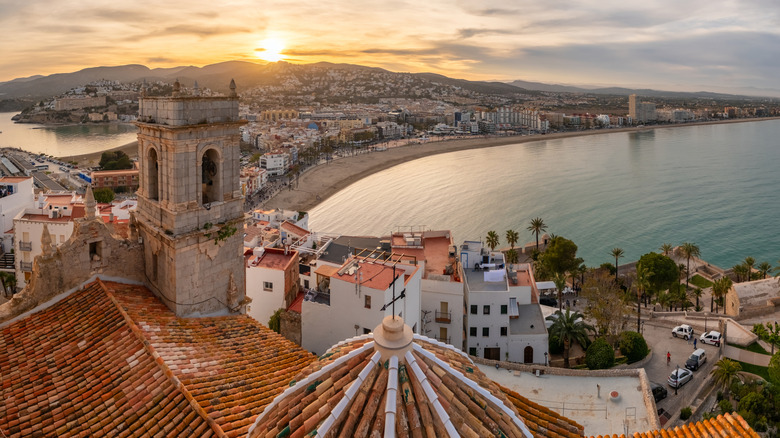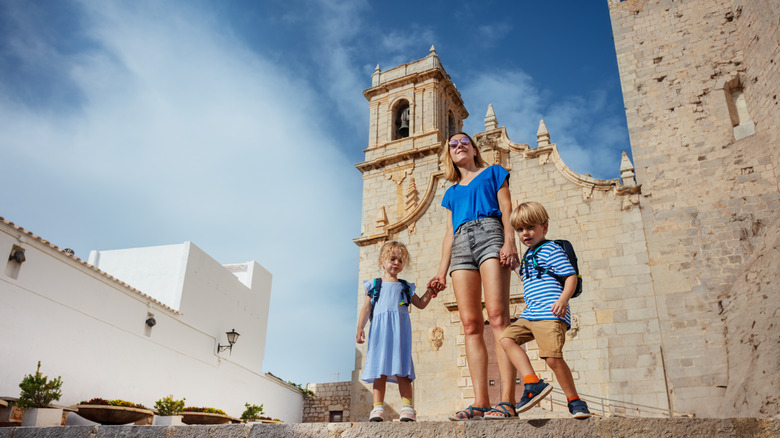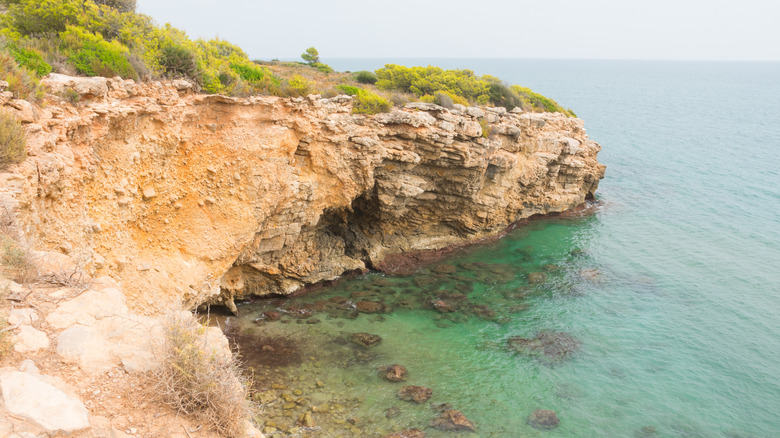Sandwiched Between Barcelona And Valencia Is A Mediterranean Beach Town With Ancient Ruins And Secret Coves
Close your eyes and imagine a place where Old World walls echo the Mediterranean lapping against gravel beaches or a town with white-washed buildings and intimate, beautiful coves. The country has plenty of secret paradises with unspoiled beaches, like Cádiz, Spain's "Little Havana," and Peñíscola, located in Spain's Castellón province, is no different. It stands along the Mediterranean Sea, protecting its rich history and wondrous secrets behind medieval walls.
Peñíscola thrives in the summertime. In June, the Fiestas de San Juan feature live music and fireworks, and the pristine beaches are still uncrowded. The sun also sets as late as 10 p.m. in late June to early July, allowing for more daylight to explore the nearby Sierra de Irta Nature Preserve, just a 30-minute drive away. Peñíscola is conveniently located between two of Spain's major coastal locales and their airports, just about 90 miles from Valencia and 140 miles from Barcelona. If you come from the country's capital of Madrid (whose rooftop bars, art museums, and Egyptian temples rival those of NYC), you can drive to the city in about five hours. But to thoroughly explore the area, you'll want to stay at Peñíscola's picturesque villas, hotels, or resorts that overlook the Mediterranean.
Walk through Peñíscola's ancient ruins
Spain holds a rich history in its architecture. In 711 A.D., the Berber general Tariq ibn Ziyad led his army across the Strait of Gibraltar, separating Northern Africa from the Iberian Peninsula. This launched an eight-century-long Islamic Moorish occupation in Spain, ending when Ferdinand II and Isabella I overthrew the city of Granada in 1492. Despite the dismantling of the Moorish monarchy, vestiges of their architecture remain throughout the southern Andalucía region. From the Great Mosque of Córdoba to the Alhambra palace in Granada, Spain has retained this historical period. The Alcázar of Seville is an example of how Christian and Moorish styles merged to create the unique Mudéjar architectural style.
Peñíscola's castle shares this architectural lineage. Between 1294 and 1307, the ruins of the town's Arab Alcazaba became the foundation for the Castle of Peñíscola. As you walk through the town's cobblestone streets, you'll catch glimpses of the Mudéjar style by finding Catholic influences within Islamic brickwork. The town's ancient fortifications are attached to the castle walls, giving visitors the feeling of walking through an impenetrable fortress. This town also calls to mind Barcelona's Gothic Quarter neighborhood, a medieval labyrinth hiding old-world magic.
Where to find intimate coves in Peñíscola
Daring to walk on roads less-traveled will take you a long way in Peñíscola. The Cala l'Aljub in the Sierra de Irta Nature Preserve is a small and private cove. Here, you can lose yourself in the sounds of the Mediterranean away from tourists. The Cala Ordí is on the shores of Peñíscola and teems with marine biodiversity. Enjoy a tranquil experience as you peer through the clear waters at the wildlife below the surface. Playa Basseta features some of the most gorgeous views of the sun setting over the Mediterranean's horizon, with the castle's silhouette offering a magical background for pictures. Like Spain's volcanic Cabo de Gata-Níjar Natural Park with idyllic beaches, you'll find plenty of hidden coastal gems in or around Peñíscola.
Wrap up your romantic days in this beach town by dining at the local joints. Order specialized paellas (a Spanish rice dish) and suquet de peix (fish soup) at El Pescador Ermitaño. Papa Luna is among the most popular restaurants in town, offering classic seafood staples, like lobster and shrimp. Restaurante Vista al Mar serves delectable octopus dishes with a stunning view of the water. Enjoy the sea-based local cuisine to cap off the beautiful adventures you'll have in Peñíscola.


